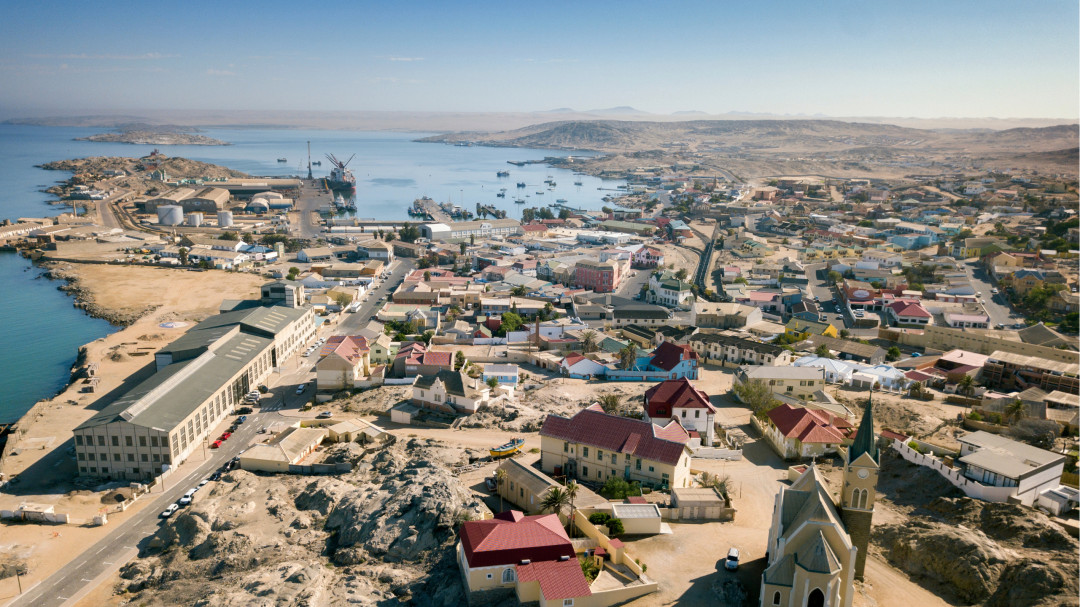
The Green-H2 Namibia project has published a report that provides an overview of the country's ambitions and opportunities to become a major producer of green hydrogen. In addition, the report outlines hydrogen demand and production costs at a global level and reflects on Namibia's role as an exporter of green hydrogen.
Namibia has one of the largest renewable energy potentials in the world, which is ideally suited for the production of green hydrogen at low cost. The Namibian government aims to benefit economically from the export of green hydrogen derivatives and has published its goals in the "Green Hydrogen and Derivatives Strategy". The strategy envisages production targets of 1-2 million tonnes of green hydrogen equivalents by 2030 and 10-15 million tonnes by 2050. However, a major obstacle is the lack of industrial infrastructure in the country to achieve the ambitious targets. The GreeN-H2 Namibia report puts Namibia's green hydrogen efforts into a global context and highlights the key cost drivers for export.
Currently, the production costs for green hydrogen are still comparatively high at USD 4-9 per kg of hydrogen (USD 1-2.5 per kg of hydrogen by conventional means). However, these costs will be reduced by technological advances to optimise cost efficiency and by economies of scale. Another important cost factor is the cost of electricity, which can be very low in Namibia due to the high potential for renewable energies.
Assumptions about the average photovoltaic potential for Namibia range between 2,150 and 2,450 kWh/m2/a, while the wind potential for the harbour areas of Walvis Bay and Lüderitz is estimated at 3,047 kWh/m2/a and 4,936 kWh/m²/a, respectively. It is assumed that in 2030, a total of around 227 kt of green hydrogen can be produced in Omaruru, Walvis Bay and Lüderitz.
However, an often neglected aspect is the impact of transport costs. Depending on the transport medium and distance, imported green hydrogen can be twice as expensive as its production costs. This cost increase is caused by energy-intensive conversion processes in which hydrogen is liquefied or converted into other liquid carriers to achieve a higher energy density. "Long-distance transport is more suitable if the conversion steps are reduced," says co-author Dr Chokri Boumrifak. "Therefore, it is imperative to focus on products that can be further processed with higher value". Most green hydrogen projects in Namibia will produce ammonia, which can be transported in liquid form. In these cases, it is advantageous to use the ammonia as an intermediate for chemicals or fertilisers rather than splitting the compound to recover the hydrogen.
Several pilot projects in Namibia are either in the planning or construction phase. These projects serve to demonstrate numerous hydrogen value chains, such as the production of green ammonia, green iron, hydrogen as a fuel for locomotive transport and for power generation. Some of these projects aim to achieve industrial scale after successful demonstration. In total, these projects are expected to produce at least 650 kt of green hydrogen per year. However, additional production capacity will be required to achieve the 2030 strategy targets.
As Namibia is not highly industrialised, the emerging green hydrogen industry is in a greenfield environment. For this reason, the first projects must overcome the hurdles of cost reduction, development of standards and infrastructure expansion. Despite these challenges, Namibia is ideally positioned to produce large quantities of low-cost green hydrogen using the abundant solar and wind energy.

